|
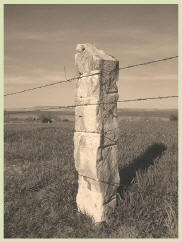
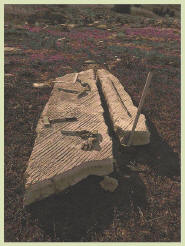
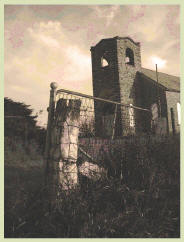
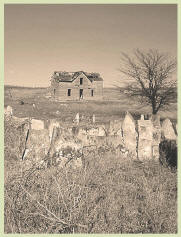
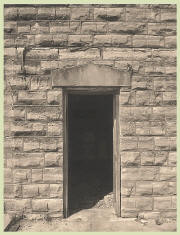
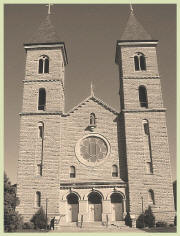
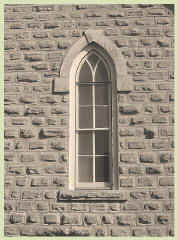
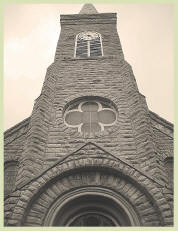
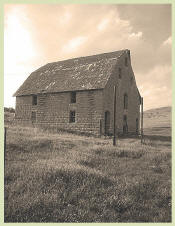
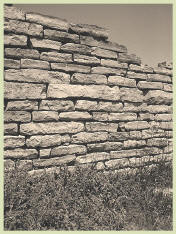
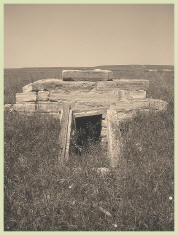
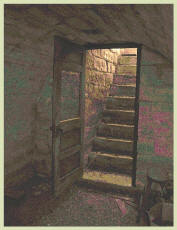
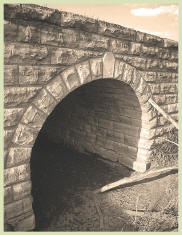
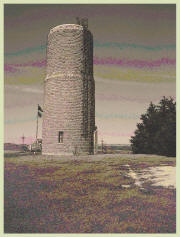
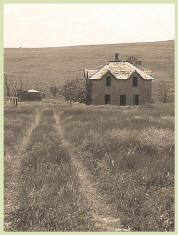
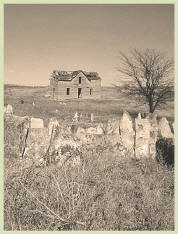
|
Kansas Limestone
H I S
T O R Y
|
Fence Posts |
| |
|
“Land of the Post Rock” is a distinction given to about 3 million
acres in North Central Kansas- an area where a single bed of rock (the
8-12” Fencepost bed of the Greenhorn limestone layer) was used so
extensively for fence posts during early Kansas settlement days that
the posts have become an identifying feature of the landscape.
Settlers to Kansas found that the area was destitute of timber and
turned to the material at hand…a layer of rock close to the surface
that they soon found could be used for fencing as well as building.
Besides being durable and fire resistant, this limestone had several
other advantages. Being close to the surface it could be obtained
easily with the proper tools and techniques. It was uniform in
thickness (8-12”). It was persistent, extending with little
interruption for miles. And when freshly quarried it was soft enough
to shape with tools and hardened after being exposed to air.
There
were of course disadvantages. Quarrying rock in “post” length required
skill, hard work, and time. Once split out and shaped they had to be
transported. This again required hard work and ingenuity as each 5 to
6 ft long post weighed about 350-400 lbs.
Posts
were hauled/delivered to the pasture using various means. To go short
distances a “sled” or “boat” was often used. This has been described
as being a large forked tree limb with branches laid crosswise to make
a platform which would hold several posts. A team of horses would then
pull the sled to the post hole.
After
being delivered to the fence line it was considered a simple job to
tip the post (always the heavier end) into the prepared holes. The
holes were dug by hand to a depth of 18” to two or more feet
(depending on the height of the posts). Holes were dug about every 15
feet so that in the finished fence line there were about 320 posts per
mile. Corner posts were propped to stay in a vertical position by
leaning other posts against them at about a 45 degree angle (generally
in the direction of the fence lines).
|
|
Building Stone |
| |
|
Often because of its name and unique use, Fencepost Limestone is
identified with stone posts- neglecting its primary use as building
stone. Even settlers with little knowledge of how to quarry or lay
stone used it to line wells and cellars, to form inside walls and
outside fronts of dugouts, to build fireplaces, to make steps and
porches…
The
1870’s was Post Rock Country’s formative period as well as being the
period of time that saw the greatest influx of European
immigrants…Bohemians/Czech, Volga Germans, Germans, Swedes, Danes,
Norwegians, Scots, and English. Soon every community in North Central
Kansas included stone masons from the “old country” which assured
knowledge about the building potential of post rock and their
inclination to use it. The emerging (and now remaining) architecture
was the most visible link of these groups/communities to their past
and gives insight into the way they worked, played, and worshipped.
Many agree that of all influences in central Kansas none exceeded that
of the Germans. Despite grasshoppers, crop failures, and other
adversaries, most Germans held on.
Cooperative work involving building with stone gave those with little
or no experience a chance to learn from a trained craftsman. By the
1880’s improvements on homestead claims included stone houses,
outbuildings, foundations and footings, wells, walls, feeding/watering
troughs, fence posts, gate posts, hitching posts, clothes lines, and
sidewalks.
|
|
From the quarry...
to setting the stone
(tools, quarry process, dressing, lime mortar) |
Tools
used in the quarrying and shaping process were simple. They included
feathers and wedges (plugs), stone drills and bits of various sizes,
chisels, stone hammers, slips and scrapers, and scribers. Most of the
tools were made at home forges or in local blacksmith shops.
The
quarrying process for obtaining building block, fence posts, or other
products was the same: holes were drilled about 4 or 5” deep into the rock
and 9- 12” apart along a line marked for splitting; feathers and wedges
were placed in the holes; and tapping the wedges lightly with a stone
hammer split out the slabs, posts, or blocks.
Although
building block size was standard (2’x8”x8”), there were a variety of ways
in which a block was dressed or finished: rough quarry faced, axe
flattened (characterized by the kerf marks of the axe), pitched faced
(also know as pillow faced), and sawn (although traditionally done with a
two man bucksaw, some ingenious settlers came up with alternatives such as
a mechanical saw on a beveled gear driven by a mule walking in a circle).
Special hammers and chisels were used for finely dressing or
architecturally carving lintels and sills (and sometimes quoins). Lintels
were unique from building to building and were an opportunity to add an
element of style and artistic beauty to a structure. Sills often followed
in the style of the lintels and were usually weatherized to help shed
water.
The
mortar needed to lay building blocks came from “slaked” lime…burning
broken pieces of limestone in crude kilns along creek banks to extract
(which produced) a lime powder used for mortar and plaster. One needed to
begin “slaking” their lime long before any other element of the building
process could begin. Burning lime mortar and plaster was one of the first
industries to evolve with limestone quarrying and the building trade.
|
Sidewalks, Bridges &
Caves |
Sidewalks were the pride of many post rock towns, historically quoted as
being the “best sidewalk in Kansas”, and “firm under feet for
generations”. The large pieces were hauled from local quarries fastened
with chains to the running gears of the rock wagon. Sidewalks could be
either a full 8” thick or a thinner flagstone. The flagstone came from
specific areas of Post Rock country (Mitchell and Lincoln counties) where
the Fencepost layer has a natural tendency to split along the center brown
streak, which made flagging from a slab of rock possible. This was used
extensively for sidewalks.
After
1900 when the building and maintaining of roads became important to the
region, post rock was called upon as a material for bridges. In building
bridges for both public roads and railroads, the stone arch emerged as a
popular architectural form. Native limestone bridges tended to be at least
twice the cost of any other type of bridge. Most thought the cost was
justified as the bridge would stand for hundreds of years and cost little
or nothing for repairs. In addition to this, nearly the whole amount paid
for a bridge was going back into the local economy (material/stone and
labor).
Another
unique use of the post rock was for stone arch caves, which farmers needed
for shelter from storms/tornadoes and a storage place for farm products.
The typical method for building caves was to lay stone blocks for the base
of the cave walls to a height of about a foot. Wood forms for the arch
were set on the wall bases and boards placed over the forms made a solid
arch. Stone blocks were then laid over those boards. When laying the
blocks was completed, the wood forms were knocked out. The stone arch (the
cave wall) would stay. Mortar was not necessary as pressure from the stone
would hold the arch in shape.
|
Post Rock's Decline &
1930's WPA |
|
|
|
By
1920 building with stone and regional development had passed their
climax. Among many factors contributing to this decline was the
availability of cheaper, easier to use building materials. Many of the
old stonemasons were leaving the scene and young men (returning from
WWI) took work away from the homestead. A new type of economy and pace
of life was evolving. Power machinery began to arrive on farms. The
automobile gave residents mobility and the area accessibility.
Homesteads were losing their self-sufficiency status. Rural farming
began shifting to fewer farms.
The
depression of the 1930’s made possible a brief comeback of post rock
as a major building material. It was widely used in public
construction projects funded by the federal Works Projects
Administration (WPA). No posts were quarried or set under the WPA, but
post rock was used in many building projects: schools, libraries, city
halls, community buildings, bridges, park shelters, recreational
facilities, and courthouses. Post rock was again a resource that came
to the aid of its regional economy, leaving behind a multitude of
incredible limestone structures and adding to the legacy …”Land of the
Post Rock”. |
|